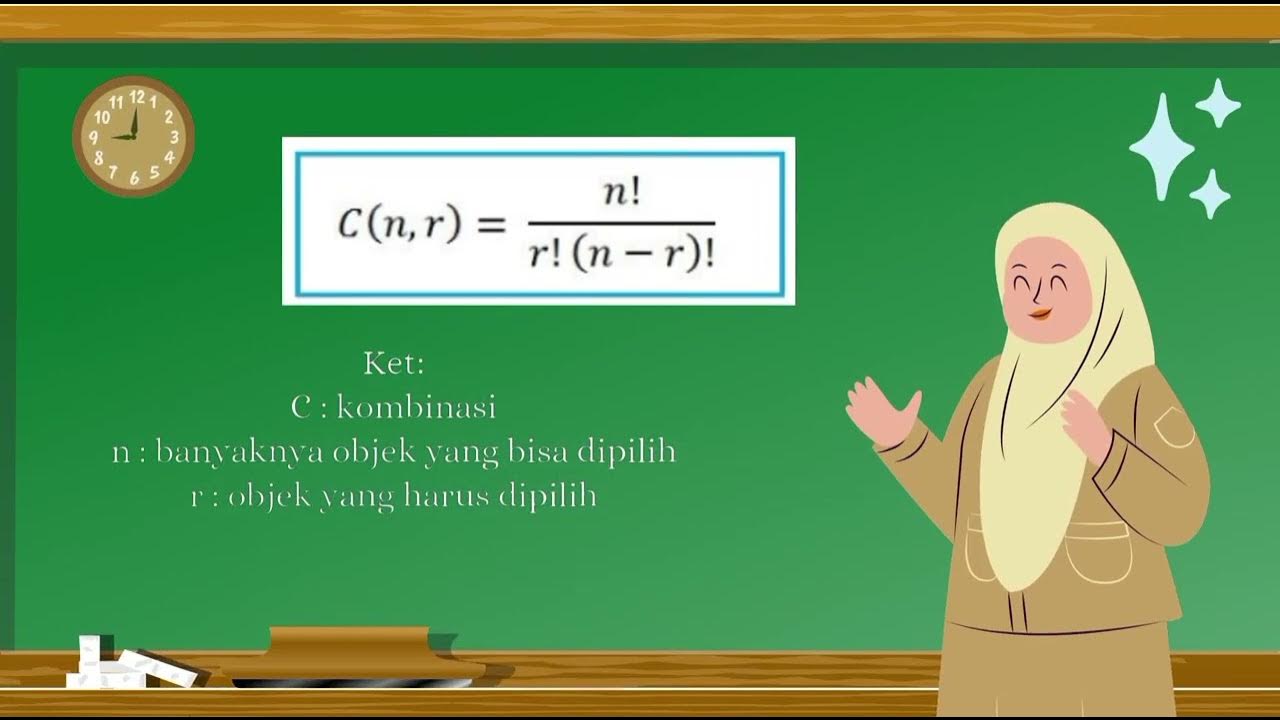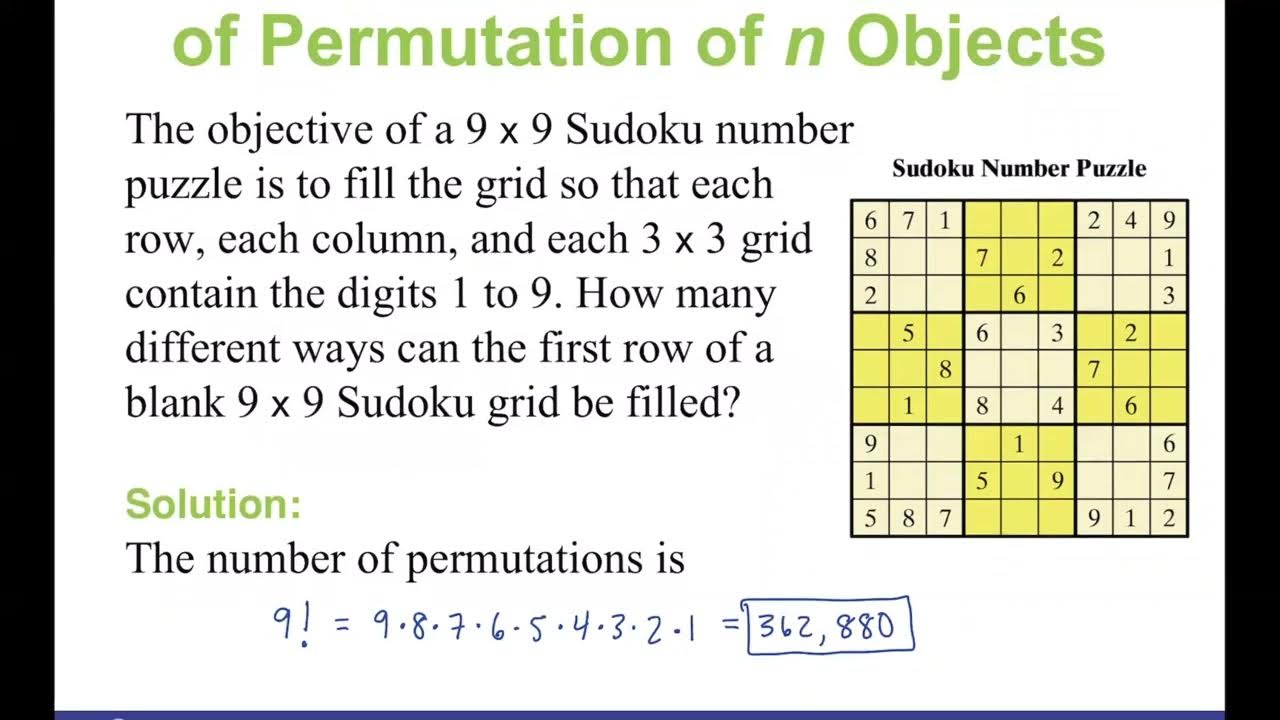Diferencia entre Permutaciones y Combinaciones
Summary
TLDRThis video explains the difference between permutations and combinations using a football tournament example. Permutations focus on the importance of order, such as assigning champion and runner-up titles, resulting in 12 possible outcomes. The formula for permutations is presented and calculated. On the other hand, combinations emphasize the selection of items without considering the order, such as determining possible final matchups, which results in 6 possibilities. The video clarifies the key distinction: permutations involve ordered arrangements, while combinations deal with unordered selections.
Please replace the link and try again.
Q & A
What is the main difference between permutations and combinations?
-The main difference is that in permutations, the order of elements matters, while in combinations, the order does not matter.
What example is used in the script to explain permutations and combinations?
-The script uses the example of four football teams competing in a tournament, with the tasks of assigning titles of champion and runner-up (permutations) and determining possible matches (combinations).
How many possibilities are there for assigning the titles of champion and runner-up?
-There are 12 possibilities for assigning the titles of champion and runner-up, as calculated using permutations.
What formula is used to calculate permutations?
-The formula for permutations is: P(n, r) = n! / (n - r)!, where n is the total number of elements and r is the number of positions to be filled.
What is the result when applying the permutation formula to the four teams for the two positions of champion and runner-up?
-Using the permutation formula, P(4, 2) = 12, meaning there are 12 different ways to assign the titles of champion and runner-up.
How many possible combinations are there for the final match between the teams?
-There are 6 possible combinations for the final match, where the order of the teams does not matter.
What formula is used to calculate combinations?
-The formula for combinations is: C(n, r) = n! / (r! * (n - r)!), where n is the total number of elements and r is the number of elements to choose.
Why is the number of possible combinations 6 in the final match example?
-There are 6 possible combinations because there are 4 teams, and we are choosing pairs of teams for the final match. The formula C(4, 2) yields 6 combinations, as the order of the teams does not matter.
What does the factorial symbol (n!) represent in the formulas for permutations and combinations?
-The factorial symbol (n!) represents the product of all positive integers from 1 to n. For example, 4! = 4 × 3 × 2 × 1.
How does the order of elements affect permutations but not combinations?
-In permutations, the order of elements matters, meaning that different arrangements of the same elements count as distinct possibilities. In combinations, the order does not matter, meaning that selecting the same elements in any order counts as one possibility.
Outlines

This section is available to paid users only. Please upgrade to access this part.
Upgrade NowMindmap

This section is available to paid users only. Please upgrade to access this part.
Upgrade NowKeywords

This section is available to paid users only. Please upgrade to access this part.
Upgrade NowHighlights

This section is available to paid users only. Please upgrade to access this part.
Upgrade NowTranscripts

This section is available to paid users only. Please upgrade to access this part.
Upgrade NowBrowse More Related Video

Konsep Kombinasi [Materi Matematika Kelas 12]

Kaidah Pencacahan • Part 7: Permutasi

PERMUTASI - Jenis Permutasi - Matematika SMA/SMK

KOMBINASI (Penjelasan, Rumus dan Contoh Soal disertai Pembahasan)

Ohhh, jadi begini cara bedain KOMBINASI sama PERMUTASI | Pembahasan materi KOMBINASI PERMUTASI

Math 123 - Elementary Statistics - Lecture 12
5.0 / 5 (0 votes)